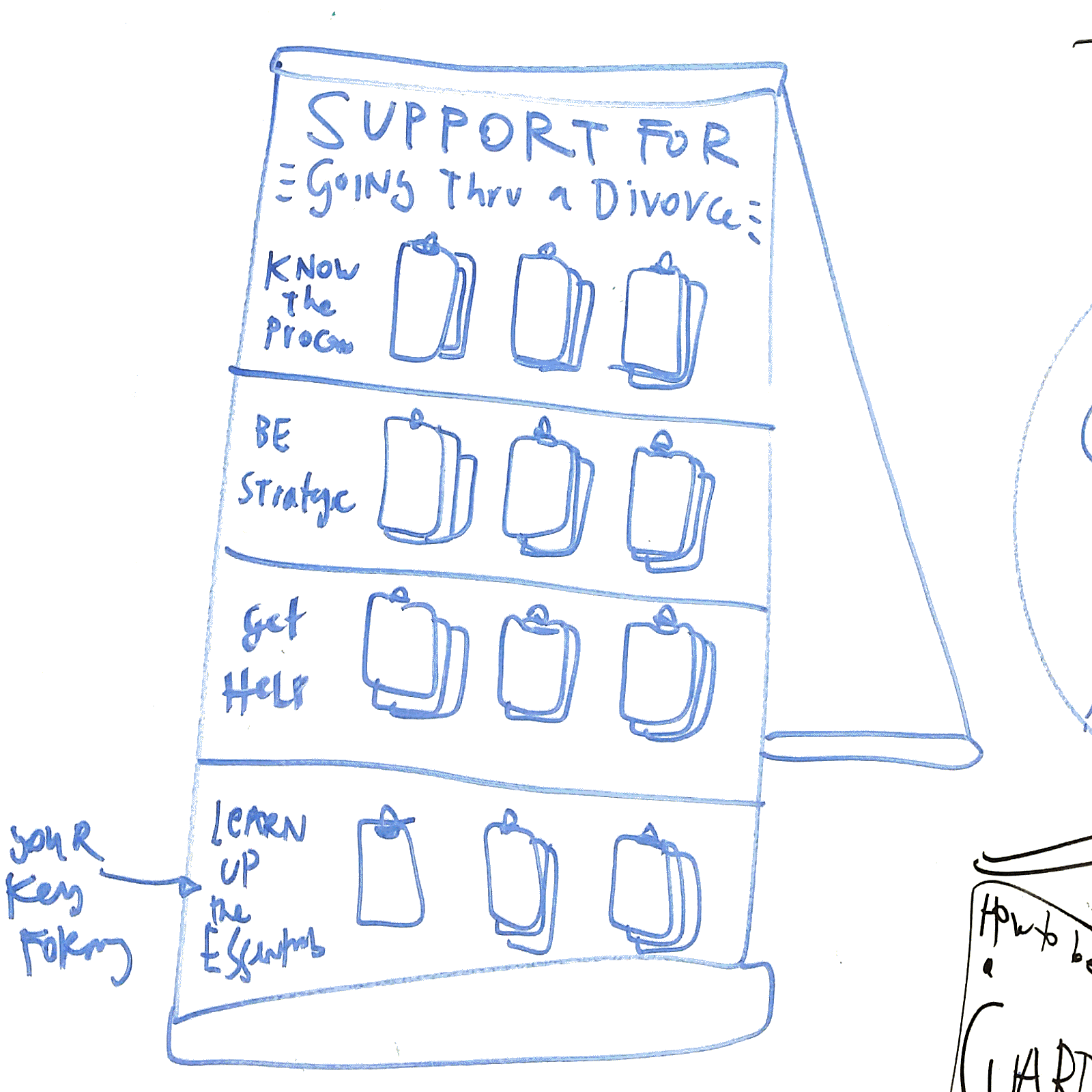 What is it?
What is it?
Posters and other large-scale signage that can be placed physically throughout and around the court building, and on any web- or mobile-based court technology. It would reach out to people considering using the court by framing the problem in words they understand, using iconography and colors. It would give the person a ‘pathway’ view of what resources are available for their issue-area, and help them understand what applies to them.
How could it be implemented?
Work with a visual designer to choose the right color scheme, fonts, and icons. Work with a content expert to choose the most important issues, and how people talk about them. Then create outreach signage that features the pathways of these issues, and that presents it in ways that will engage the target audience.
This will likely take several weeks to a month to design, and $1000 to create the signage.

Our design notes
Courts and associated legal actors must implement a coherent, user-centered signage system. It should be with larger fonts, consistent color coding, and use of pictograms. The names should be consistent across all signs, and they should be phrased in terms of the problem or task of the user that they are addressing, rather than the term that the legal system has created for them.

- Signage review — does it all point to where you want to go
- Large, colored signs
- Bigger text, more graphics, having pictograms to refer to
- same name across all signs
- Links of all the different offices and places to these same core problems of the users — clearer delineation of all the services that start with “Family Law”
- Phrased in terms of users’ problem and their language (not legal categories) — action oriented tasks rather than ‘insider terms’ for the organization
- Main other language on the sign too — Spanish in this case





 What is it?
What is it? 




